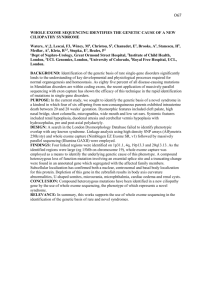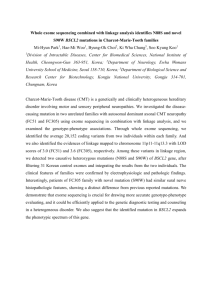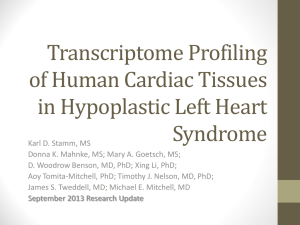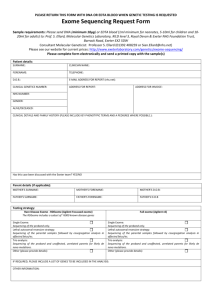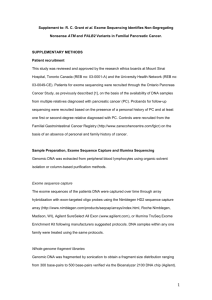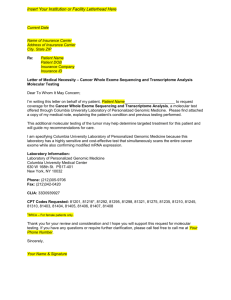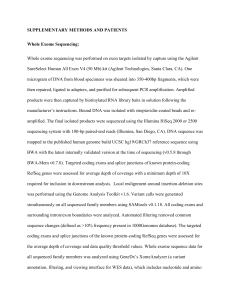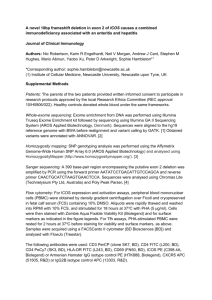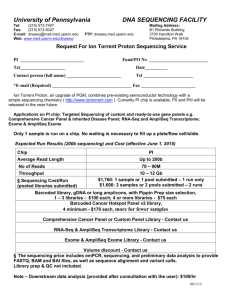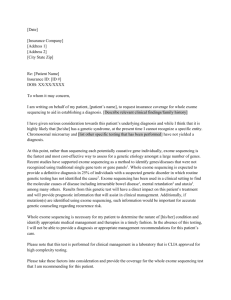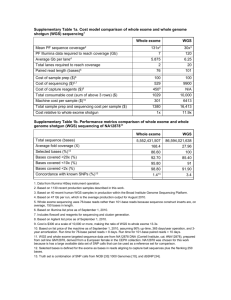Additional 1: Whole exome sequencing methods The SureSelect
advertisement
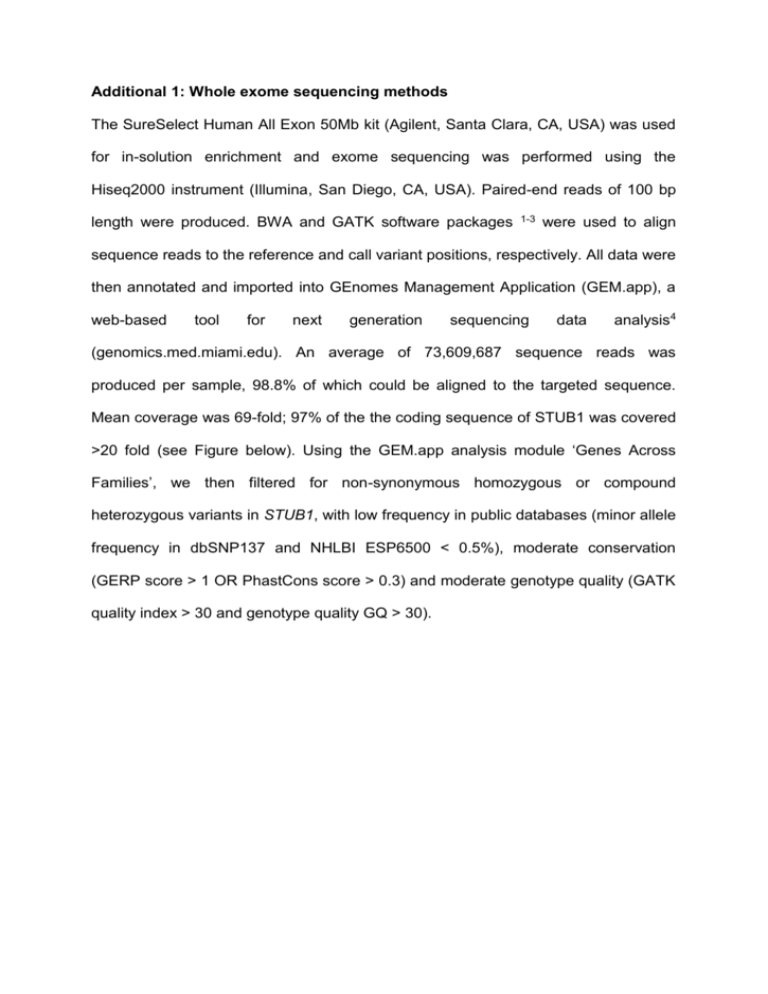
Additional 1: Whole exome sequencing methods The SureSelect Human All Exon 50Mb kit (Agilent, Santa Clara, CA, USA) was used for in-solution enrichment and exome sequencing was performed using the Hiseq2000 instrument (Illumina, San Diego, CA, USA). Paired-end reads of 100 bp length were produced. BWA and GATK software packages 1-3 were used to align sequence reads to the reference and call variant positions, respectively. All data were then annotated and imported into GEnomes Management Application (GEM.app), a web-based tool for next generation sequencing data analysis4 (genomics.med.miami.edu). An average of 73,609,687 sequence reads was produced per sample, 98.8% of which could be aligned to the targeted sequence. Mean coverage was 69-fold; 97% of the the coding sequence of STUB1 was covered >20 fold (see Figure below). Using the GEM.app analysis module ‘Genes Across Families’, we then filtered for non-synonymous homozygous or compound heterozygous variants in STUB1, with low frequency in public databases (minor allele frequency in dbSNP137 and NHLBI ESP6500 < 0.5%), moderate conservation (GERP score > 1 OR PhastCons score > 0.3) and moderate genotype quality (GATK quality index > 30 and genotype quality GQ > 30). Coverage of STUB1 by whole exome sequencing in a large-scale screening of various neurodegenerative phenotypes. The plot represents the average coverage across these samples. The alternating green and blue lines represent different exons in the gene. Please note the logarithmic scaling of the y-axis.

